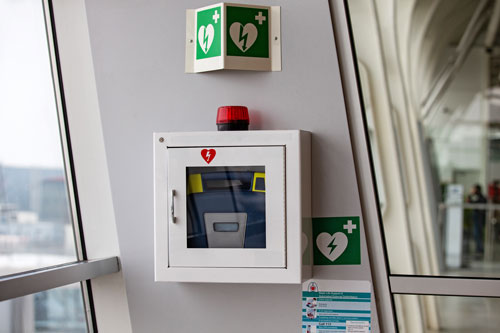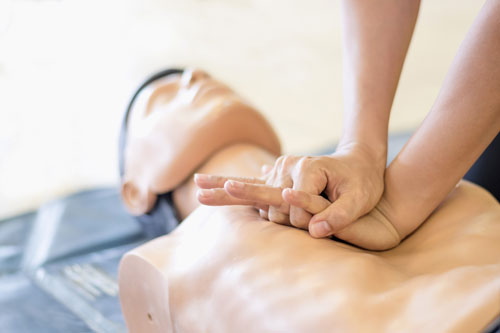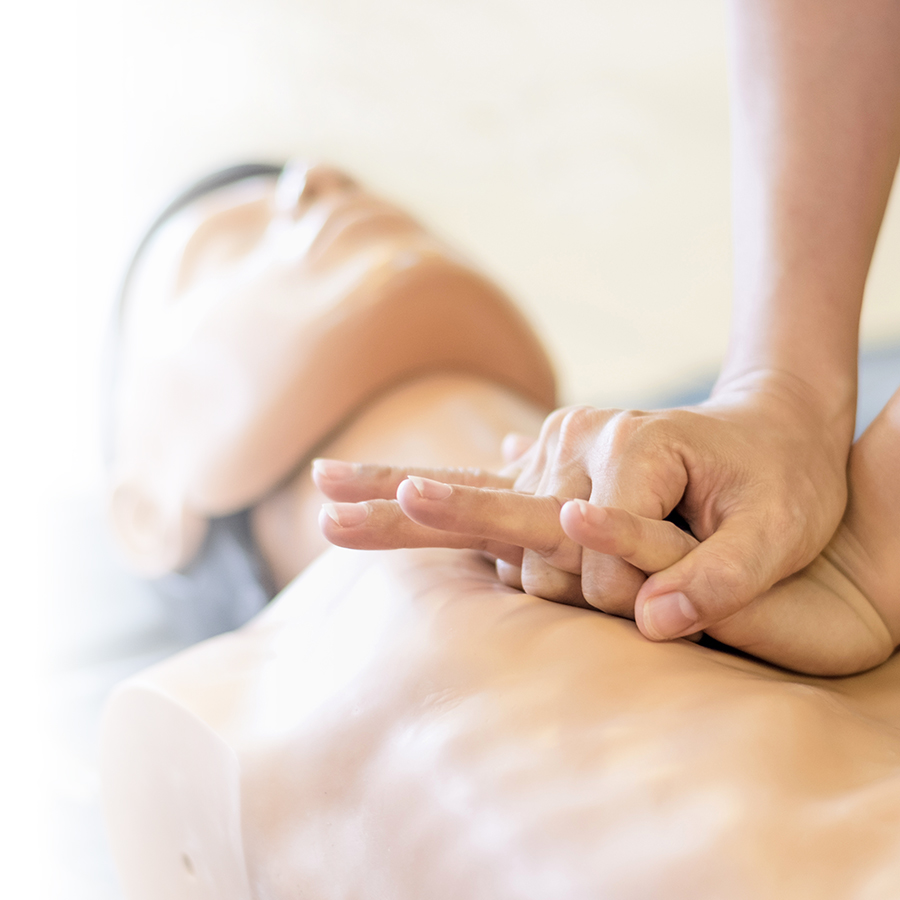Almost 80% of cardiac arrests occur at home or in public places. Knowing how to take the necessary measures at the appropriate time will increase the affected person's chances of survival and recovery by 30%. In light of this, there is no doubt—CPR is vital!
What is the first sign of cardiac arrest?
Cardiac arrest prevents blood flow; this situation can quickly result in damage to the brain and other organs, and eventually in death. Cardiac arrest differs from a heart attack. In the case of a heart attack, the heart continues to beat. However, blood flow to the heart is diminished by a blood clot.
The signs of cardiac arrest are:
- lack of respiration
- lack of response to initial artificial respiration, and
- lack of a pulse
What causes cardiac arrest?
Cardiac arrest is typically caused by:
- heart disease
- drowning
- cerebrovascular accident (stroke)
- electric shock
- suffocation
- drug overdose
- road accident, and
- injury
What to do in the event of cardiac arrest?
Cardiopulmonary rescucitation (CPR)
The goal of cardiopulmonary resuscitation (CPR) is to maintain blood flow momentarily in the blood vessels and an oxygen supply to the cells. Here are the steps to follow to start CPR:
- Call 9-1-1. If there is someone else there with you, ask them explicitly to do it for you. Ask the person to confirm to you when the call has been made.
- Ask for an automatic external defibrillator (see below) in the case where one is available. You can go and get it yourself if you are alone and you think you are able to return to the unconscious person in less than three minutes.
- Begin CPR. A person who is alone can perform CPR using the simplified technique of cardiac massage without mouth-to-mouth. New recommendations for CPR put the emphasis on chest compressions. You can familiarize yourself with this technique by visiting the Heart and Stroke foundation website.
Essentially, it is recommended to apply firm and rapid compressions to the central area of the chest at the level of the sternum. Compressions must be continued until a person with advanced resuscitation skills arrives or until the unconscious person begins to breathe normally again.
Cardiac massage must be performed at a rapid pace, about 100 compressions per minute, in order to maintain blood flow. To help you keep the tempo, hum the song Stayin' Alive, as it has the perfect beat to ensure effective CPR. The optimal ratio is of 30 compressions for 2 rescue breaths. Compression depth of the chest is also important to ensure optimal CPR. It must be of at least 5 cm (2 inches). Don't hesitate to press hard!
Automated External Defibrillator (AED)
Cardiac arrest can be caused by abnormal heart contractions called arrhythmias. The automated external defibrillator (AED) is a device that serves to analyze and correct these arrhythmias. It is designed to send an electric shock to the heart to restore a normal rhythm and blood flow. The AED instructs the user to administer an electric shock only when it can be effective.
Without prompt assistance, including the use of an AED, less than 5% of people in cardiac arrest outside of a hospital environment survive. The Heart and Stroke Foundation encourages the purchase of an AED for sports centres in your community. Learn more about them and make your living environment safer!

AEDs are available in several public places, including certain pharmacies affiliated to Jean Coutu. In addition, the AED-Quebec mobile application allows you to locate the nearest AEDs in Quebec and have access to vital information about CPR. Look for the symbol of a heart with a lightning bolt through it. It will direct you to the AED closest to you. There are instructions written on the device case and pictograms that indicate how to install the electrodes on the unconscious person.
First aid and CPR training
Would you like to acquire additional resuscitation skills? Training for first aid, CPR, and defibrillation using an AED will enable you to take proper action when a person is in distress. This training is provided in Quebec by more than 4000 qualified instructors by the Heart and Stroke Foundation. Training typically includes classic CPR, using chest compressions combined with artificial respiration.


